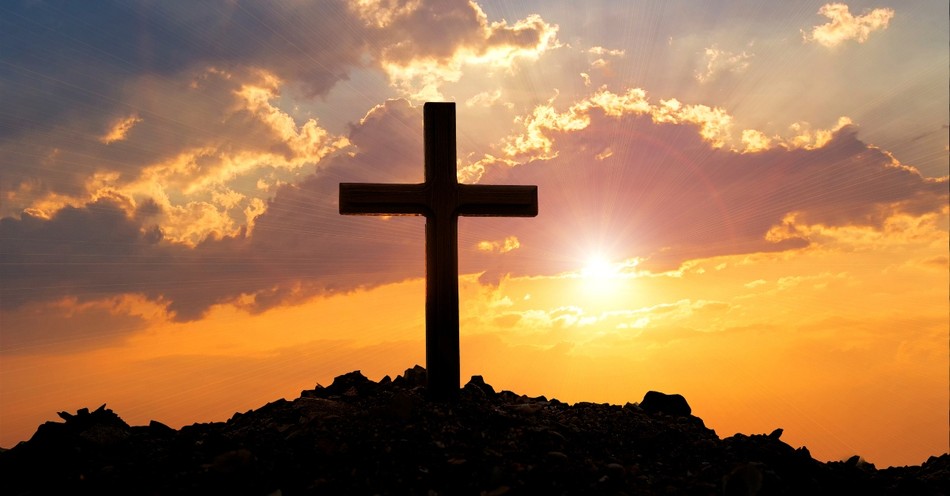When Is Easter in 2025?
This year, Easter will be on Sunday, April 20, 2025
Holy Week will begin on Palm Sunday, April 13th, and end on Holy Saturday, April 19th, followed by Easter Sunday, April 20th.
Following the Julian calendar, the Eastern Orthodox Easter will be on Sunday, April 20th. This year is unique in that both Eastern Orthodox and Western Easter will coincide on the 20th.
Future Dates of Easter
- 2026 - Sunday, April 5th
- 2027 - Sunday, March 28th
- 2028 - Sunday, April 16th
- 2029 - Sunday, April 1st
- 2030 - Sunday, April 21st
- 2031 - Sunday, April 13th
- 2032 - Sunday, March 28th
- 2033 - Sunday, April 17th
- 2034 - Sunday, April 9th
Get your free Easter Prayer and Scripture Guide to reflect on the meaning and importance of Christ's Resurrection.
History of Easter's Date
During the first three centuries of the Church, when believers were frequently under persecution, there was little effort to establish uniform observances of the Christian festivals. Some Gentile Christians began celebrating Easter on the nearest Sunday to the Passover since Jesus arose on a Sunday. This celebration date became especially prevalent in the Roman Empire's western part. In Rome itself, different congregations celebrated Easter on other days.
However, when Constantine became emperor and Christianity was no longer illegal, it was possible to consider more carefully the date of Easter. One of the purposes of the Council of Nicea in 325 was to settle that date. Constantine wanted Christianity to be separated from Judaism and did not want Easter to be celebrated on the Jewish Passover. The Council of Nicea accordingly required the feast of the Resurrection to be celebrated on a Sunday and never on the Jewish Passover. Easter was to be the Sunday after the first full moon after the spring equinox.
Eventually, the ruling of the Council was accepted by the whole Church, and the date of Easter was agreed to fall between March 22nd and April 25th. However, in the 16th century, the Western Church accepted the new Gregorian calendar, while the Eastern and Russian churches kept the Julian calendar. Because of this, Easter is again celebrated on different dates.
Meaning of the Name 'Easter'
The Latin word paschal for the Hebrew for Passover Pesah became the Latin word for the Resurrection day in the Romance languages, such as Spanish and French. The eighth-century historian Bede wrote that Easter, the English word for the holiday, came from the Anglo-Saxon goddess Eoster, the goddess of spring and fertility.
The Celebration of Easter
The yearly celebration of Jesus's resurrection is the oldest feast of the Christian Church, and the resurrection has been a central belief of the Christian faith from its beginning. As Paul said, if Christ is not risen, our preaching is in vain, and we are a people most miserable (1 Corinthians 15:12-14). Of course, every Sunday's worship is a celebration of the risen Lord, but a special day for the Resurrection has been part of the life of the Church from its early days.
Use Easter Prayers to give thanks and celebrate that He is risen!
Despite the differences among churches surrounding the celebration of Jesus's Resurrection, there has been, through the ages, a unanimous agreement that the Resurrection is a most joyous event and the basis of all Christian hope.
As Francis Weiser beautifully wrote, "Easter Sunday is a dazzling diamond that radiates the splendor of Redemption and Resurrection into the hearts of the faithful everywhere. Its various facets cast the brilliance of eternity over the twilight of time, and enrapture the soul with the deathless pledge of a Second Spring. The keener are the eyes of faith, the more penetrating is the vision of personal immortality behind the veil of death: When Christ rose, death itself died."
What Is Holy Week and How Is it Linked with Easter?
The observation of the week before Easter as Holy Week probably began in the fourth century when pilgrimages to Jerusalem began. When Egeria traveled to Jerusalem at the end of the fourth century, she gave a detailed account of the contemporary observance of Holy Week. Christians used liturgical drama to reenact the last scenes of Christ on earth.
- Sunday before Easter: Christ's joyous entry into Jerusalem was reenacted on Palm Sunday.
- Thursday: Maundy Thursday's feast and foot washing recalled the institution of the Lord's Supper.
- Friday: The Good Friday of the crucifixion became a day of deepest penance and fasting.
- Saturday – Easter Sunday: On the evening of the Great Sabbath, when Christ lay in the grave, the Easter vigils began with Scripture reading, singing, and prayer. Everyone poured into the Church with light to await the glorious resurrection morning.
Read Easter Bible verses to learn more about the story of Holy Week in scripture.
Easter Traditions in the Early Church
1. Baptism. As more and more people converted to the early Church, its leaders began to organize training sessions or catechumens for the new converts before they were baptized. Sometimes the period of instruction would last two or three years. Then, these catechumens (converts under instruction before baptism) were often scheduled to be baptized on Easter Sunday.
The baptismal candidates often fasted two or three days before and held a vigil on Saturday night. Then at the sun's first rays on Sunday morning, they eagerly proclaimed, "Christ is risen! He is risen indeed!" After baptism, the Christians were given white robes to wear the following week to symbolize their new life in Christ.
The practices of the Lenten fast before Easter and wearing new clothes on Easter Sunday had their origins in these catechumen customs.
2. Fasting for 40 Days. Many early churches observed various periods of fasting before Easter. Some churches fasted for one or two days, while others fasted for several weeks. At the end of the sixth century, Pope Gregory I established a 40-day period of fasting and repentance, using the 40 years or days of Israel, Moses, Elijah, and Jesus in the wilderness as patterns to follow. We now call this 40-day period Lent. It was Gregory who fixed the beginning of Lent as Ash Wednesday, with ashes placed on the head as a reminder that "dust you are and to dust you will return" (Genesis 3:19).
3. Baking, Eating, and Distributing Pretzels. Christians in the Roman empire made a special Lenten food of flour, salt, and water since meat and dairy foods were forbidden during Lent. Because Lent was a season of penance and devotion, the dough was shaped into the form of two arms crossed in prayer. In Latin, "little arms" is brucellae.
When the food was taken to Germany, it was called a brezel or a pretzel. The oldest known picture of a pretzel may be in the Vatican's manuscript from the fifth century. Pretzels are still an item of Lenten food in many parts of Europe and are sometimes distributed to the poor in the cities.
4. Sunrise Services. In Luke 24:1, the women went to the tomb at early dawn. In 1732, some young men of the Moravian community at Herrnhut, Germany, went to the cemetery at dawn to meditate on Christ's Resurrection. This became the first known Easter sunrise service. In 1741, the Moravians in Bethlehem, Pennsylvania, celebrated America's first Easter sunrise service.
Excerpts from an article in Christian history.
Other Sources:
For some additional sources on When Is Easter and more about the holiday, we highly recommend checking out these articles:
When Is Easter Sunday? This Years' Holiday Dates
What Is Easter: Understanding the History and Symbols
What Is the True Meaning of Easter? Why Is it Celebrated? - Learn more about the Christian meaning of Easter, its relation to a pagan spring festival, and why it's celebrated today!
Christianity.com's editorial staff is a team of writers with a background in the Christian faith and writing experience. We work to create relevant, inspiring content for our audience and update timely articles as necessary.



.jpg)